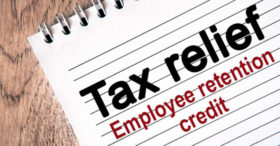Generally, it’s recommended that you review your estate plan at year’s end. It’s a good time to check whether any life events have taken place in the past 12 months or so that affect your plan.
However, with a life shock as monumental as the coronavirus (COVID-19) pandemic, now is a good time to review your estate planning documents to ensure that they’re up to date — especially if you haven’t reviewed them in a number of years.
When revisions might be needed
The following list isn’t all-inclusive by any means, but it can give you a good idea of when estate plan revisions may be needed:
- Your marriage, divorce or remarriage,
- The birth or adoption of a child, grandchild or great-grandchild,
- The death of a spouse or another family member,
- The illness or disability of you, your spouse or another family member,
- A child or grandchild reaching the age of majority,
- Sizable changes in the value of assets you own,
- The sale or purchase of a principal residence or second home,
- Your retirement or retirement of your spouse,
- Receipt of a large gift or inheritance, and
- Sizable changes in the value of assets you own.
It’s also important to review your estate plan when there’ve been changes in federal or state income tax or estate tax laws.
Will and powers of attorney
As part of your estate plan review, closely examine your will, powers of attorney and health care directives.
If you have minor children, your will should designate a guardian to care for them should you die prematurely, as well as make certain other provisions, such as creating trusts to benefit your children until they reach the age of majority, or perhaps even longer.
A durable power of attorney authorizes someone to handle your financial affairs if you’re disabled or otherwise unable to act. Likewise, a medical durable power of attorney authorizes someone to handle your medical decision making if you’re disabled or unable to act. The powers of attorney expire upon your death.
Typically, these powers of attorney are coordinated with a living will and other health care directives. A living will spells out your wishes concerning life-sustaining measures in the event of a terminal illness. It says what measures should be used, withheld or withdrawn.
Changes in your family or your personal circumstances might cause you to want to change beneficiaries, guardians or power-of-attorney agents you’ve previously named.
Find calm in the middle of a storm
In the midst of the COVID-19 crisis, many people’s thoughts are turning to their families. Updating and revising your estate plan today can provide you peace of mind that your loved ones will be taken care of in the future. We can help you determine if any revisions are needed.
© 2020 Covenant CPA









